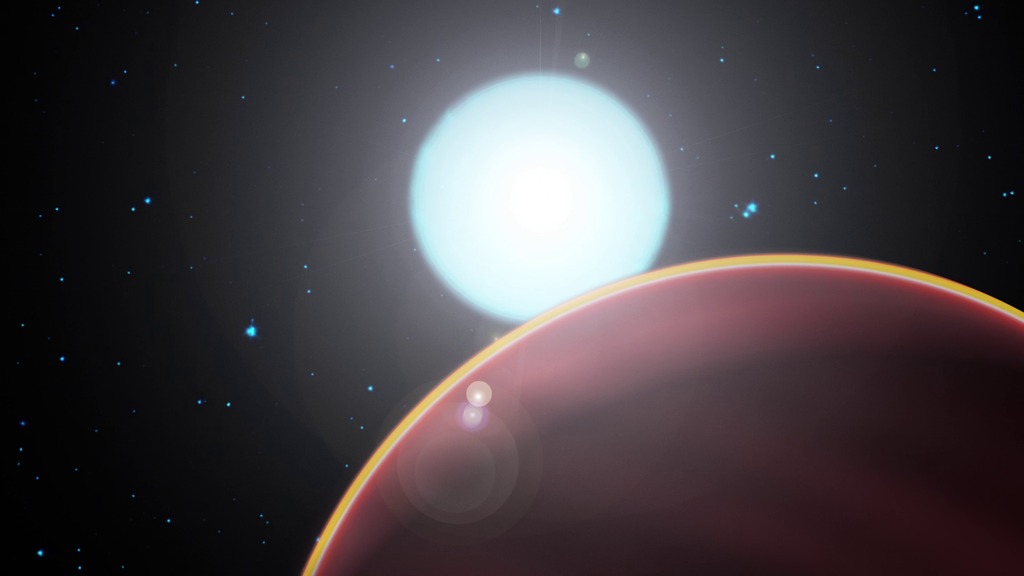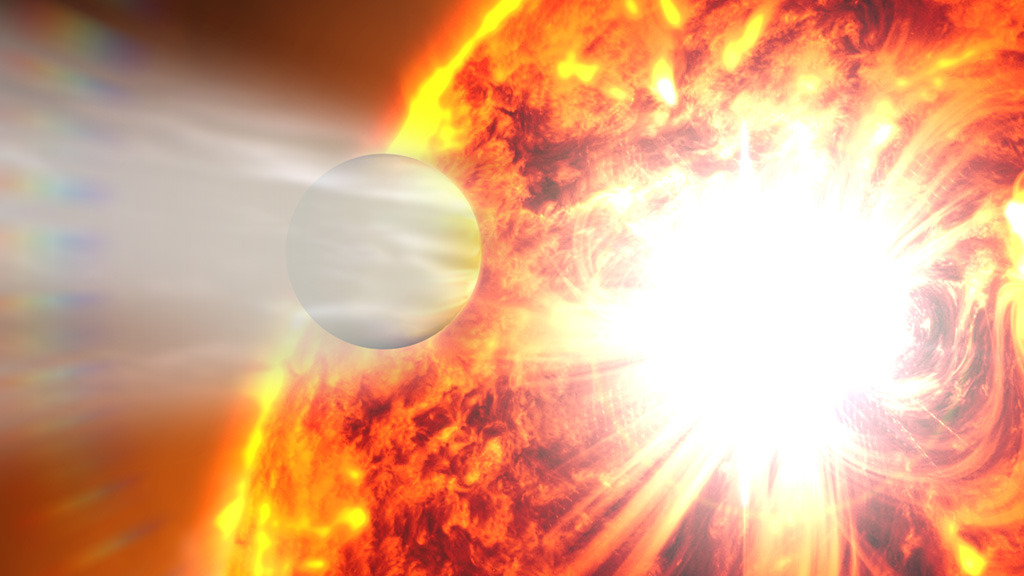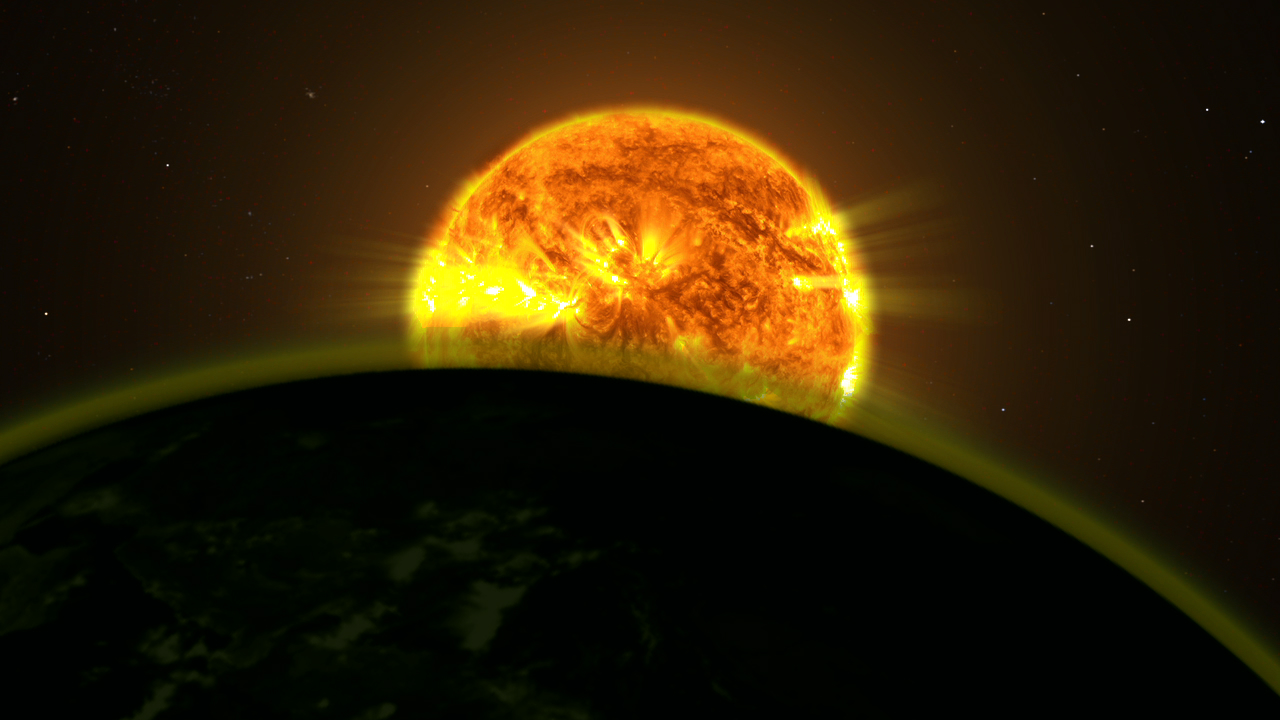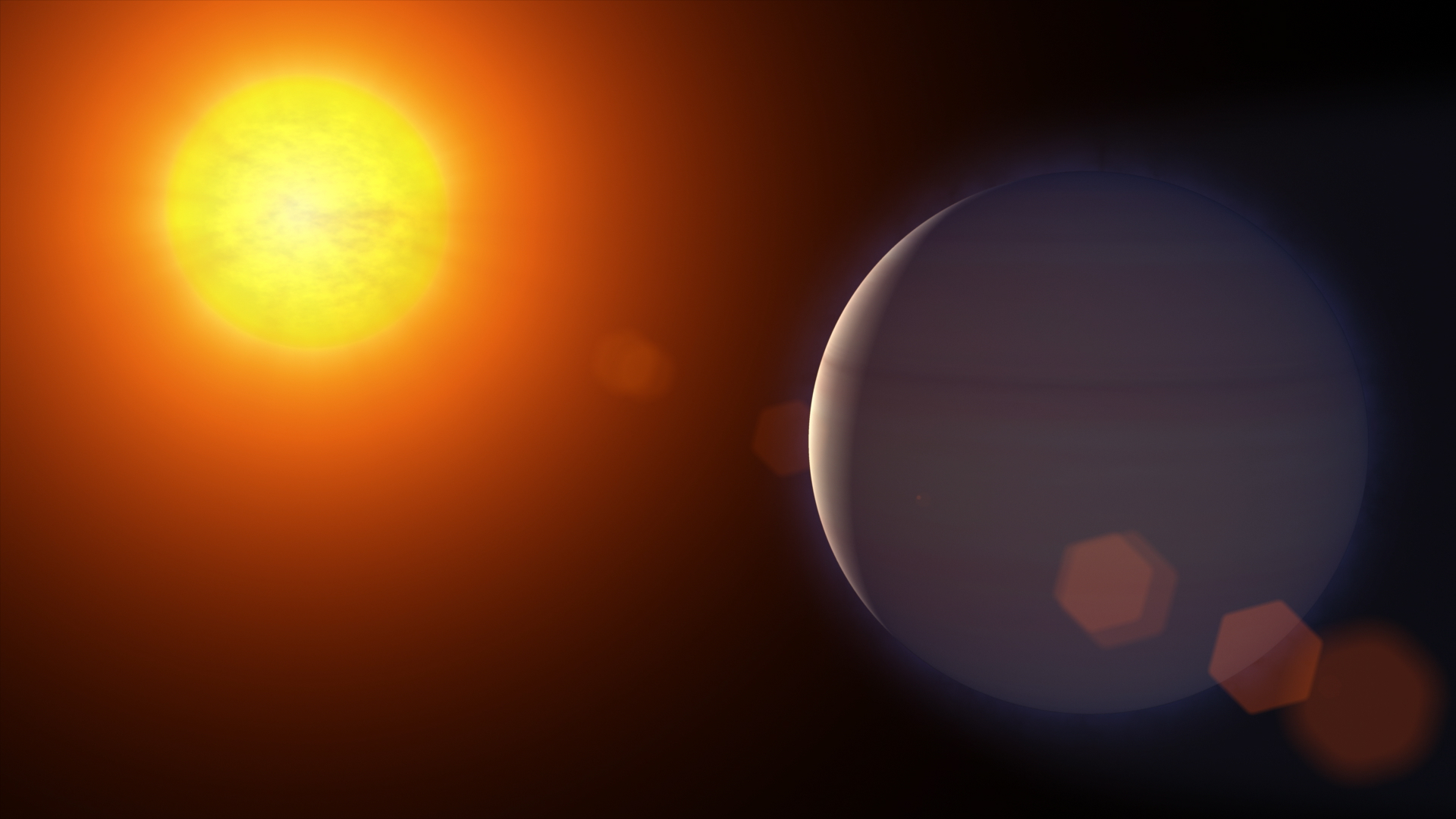Hubble, Swift Detect First-ever Changes in an Exoplanet Atmosphere
An international team of astronomers using data from NASA's Hubble Space Telescope has detected significant changes in the atmosphere of a planet located beyond our solar system. The scientists conclude the atmospheric variations occurred in response to a powerful eruption on the planet's host star, an event observed by NASA's Swift satellite.
The exoplanet is HD 189733b, a gas giant similar to Jupiter, but about 14 percent larger and more massive. The planet circles its star at a distance of only 3 million miles, or about 30 times closer than Earth's distance from the sun, and completes an orbit every 2.2 days. Its star, named HD 189733A, is about 80 percent the size and mass of our sun.
Astronomers classify the planet as a "hot Jupiter." Previous Hubble observations show that the planet's deep atmosphere reaches a temperature of about 1,900 degrees Fahrenheit (1,030 C).
HD 189733b periodically passes across, or transits, its parent star, and these events give astronomers an opportunity to probe its atmosphere and environment. In a previous study, a group led by Lecavelier des Etangs used Hubble to show that hydrogen gas was escaping from the planet's upper atmosphere. The finding made HD 189733b only the second-known "evaporating" exoplanet at the time.
The system is just 63 light-years away, so close that its star can be seen with binoculars near the famous Dumbbell Nebula. This makes HD 189733b an ideal target for studying the processes that drive atmospheric escape.
When HD 189733b transits its star, some of the star's light passes through the planet's atmosphere. This interaction imprints information on the composition and motion of the planet's atmosphere into the star's light.
In April 2010, the researchers observed a single transit using Hubble's Space Telescope Imaging Spectrograph (STIS), but they detected no trace of the planet's atmosphere. Follow-up STIS observations in September 2011 showed a surprising reversal, with striking evidence that a plume of gas was streaming away from the exoplanet.
The researchers determined that at least 1,000 tons of gas was leaving the planet's atmosphere every second. The hydrogen atoms were racing away at speeds greater than 300,000 mph.
Because X-rays and extreme ultraviolet starlight heat the planet's atmosphere and likely drive its escape, the team also monitored the star with Swift's X-ray Telescope (XRT). On Sept. 7, 2011, just eight hours before Hubble was scheduled to observe the transit, Swift was monitoring the star when it unleashed a powerful flare. It brightened by 3.6 times in X-rays, a spike occurring atop emission levels that already were greater than the sun's. Astronomers estimate that HD 189733b encountered about 3 million times as many X-rays as Earth receives from a solar flare at the threshold of the X class.

This artist's rendering illustrates the evaporation of HD 189733b's atmosphere in response to a powerful eruption from its host star. NASA's Hubble Space Telescope detected the escaping gases and NASA's Swift satellite caught the stellar flare.

Swift's Ultraviolet/Optical Telescope captured this view of HD 189733b's host star on Sept. 14, 2011. The image is 6 arcminutes across.
Credit: NASA/Swift/Stefan Immler

Strong X-ray emission makes the host star of HD 189733b stand out in this view from Swift's X-Ray Telescope. The image combines data from Sept. 13 and 14, 2011, and is 6 arcminutes across.
Credit: NASA/Swift/Stefan Immler
For More Information
Credits
Please give credit for this item to:
NASA/Goddard Space Flight Center. However, individual images should be credited as indicated above.
-
Animators
- Michael Lentz (USRA)
- Scott Wiessinger (USRA)
-
Video editor
- Scott Wiessinger (USRA)
-
Narrator
- Erin McKinley (OSU)
-
Producer
- Scott Wiessinger (USRA)
-
Writers
- Francis Reddy (Syneren Technologies)
- Scott Wiessinger (USRA)
Release date
This page was originally published on Thursday, June 28, 2012.
This page was last updated on Wednesday, May 3, 2023 at 1:52 PM EDT.
Missions
This visualization is related to the following missions:Series
This visualization can be found in the following series:Tapes
This visualization originally appeared on the following tapes:-
Evaporating Exoplanet
(ID: 2012067)
Thursday, June 28, 2012 at 4:00AM
Produced by - Robert Crippen (NASA)
Datasets used in this visualization
-
[Swift]
ID: 217 -
[HST: STIS]
ID: 218
Note: While we identify the data sets used in these visualizations, we do not store any further details, nor the data sets themselves on our site.



